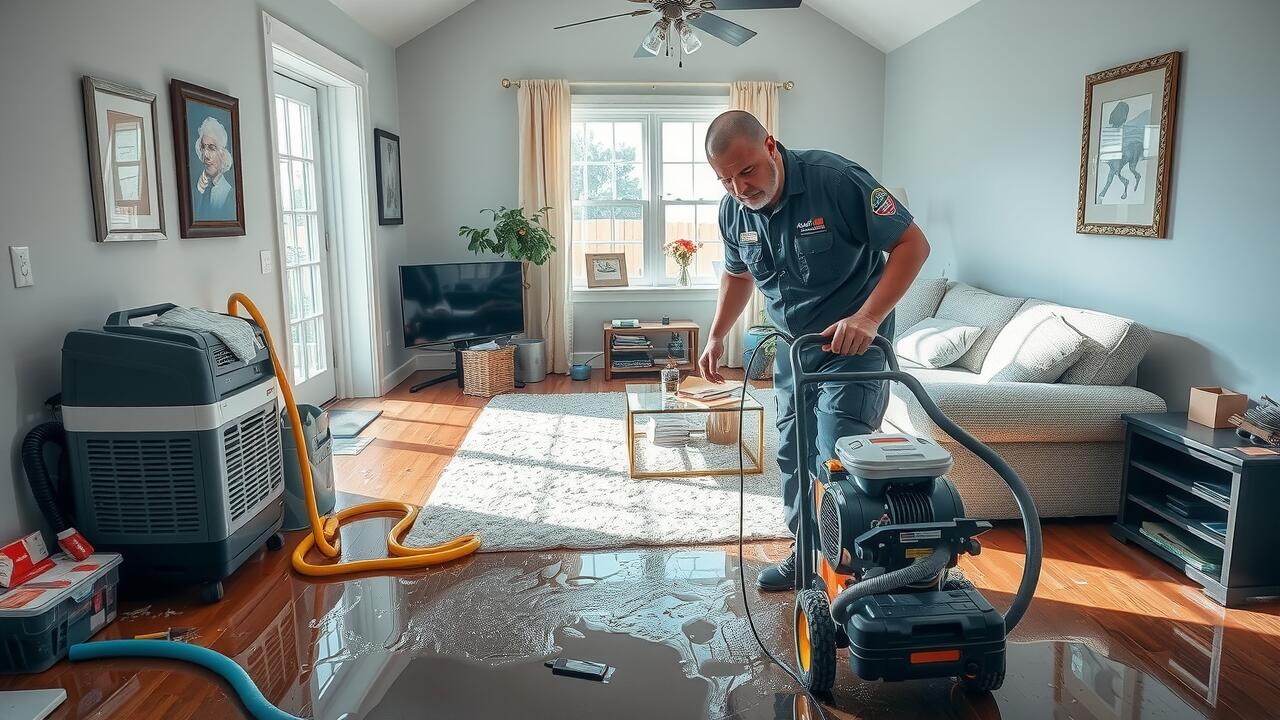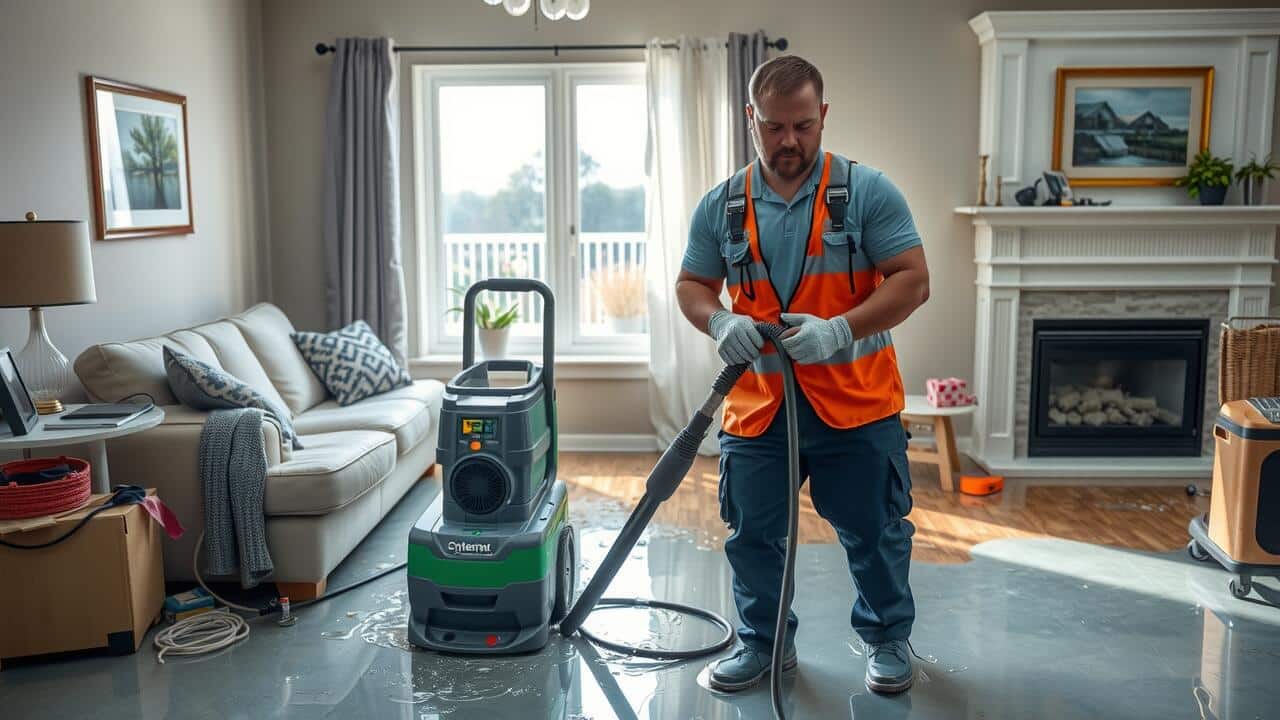
Table Of Contents
Preventive Measures Post-Flood
After experiencing a flood, taking immediate preventive measures is crucial to minimize the risk of mold growth. Start by removing any standing water as soon as possible. This may involve using pumps or wet/dry vacuums. Once the water is cleared, focus on drying out the affected areas. Open windows and doors to increase airflow. Fans and dehumidifiers can significantly aid in reducing moisture levels. Proper ventilation helps prevent an environment conducive to mold development.
Flood damage restoration involves cleaning and sanitizing surfaces that may have been affected by contaminated water. Chemicals that kill mold spores should be used on surfaces, while porous materials like carpets and drywall may need replacement. Check for hidden pockets of moisture behind walls and under floors. Regular inspections can help catch any potential mold issues early on. Thoroughly documenting the damage can also assist in any insurance claims related to the flood.
Essential Steps to Reduce Moisture
Reducing moisture after a flood is crucial in preventing mold growth. Start by removing standing water using pumps or wet vacuums. Thoroughly dry out the affected areas, including carpets, furniture, and walls. Use fans and dehumidifiers to enhance the drying process. Ensure proper ventilation by opening windows and doors when possible. Cleaning and sanitizing surfaces will also help eliminate any remaining spores from the flood damage restoration process.
After the water has been removed, inspect the property for any hidden moisture. Areas such as behind walls, under floors, and within HVAC systems can retain dampness. Regularly check humidity levels with a hygrometer; levels should stay below 60% to inhibit mold proliferation. Items that are deemed irreparable, like waterlogged insulation or drywall, should be discarded. Taking these essential steps will significantly reduce the risks of mold infestations in the aftermath of a flood.
Mold Remediation Process
The mold remediation process involves several crucial steps aimed at identifying and eliminating mold infestations caused by flood damage. Initially, areas affected by water must be dried thoroughly, usually requiring specialized equipment to extract moisture from the air and surfaces. Once the environment is adequately dried, professionals conduct an inspection to assess the extent of the mold growth. This step is critical as it informs the remediation strategy and ensures all affected areas are addressed effectively.
After the inspection, contaminated materials may need to be removed and disposed of properly. For example, drywall or carpeting that has absorbed moisture can foster mold growth and should be replaced. Following material removal, surfaces must be cleaned and treated using appropriate antimicrobial solutions. Flood damage restoration is not considered complete until the environment is certified free from mold, ensuring a safe and healthy living space for occupants.
Professional vs. DIY Approaches
When it comes to addressing mold issues after a flood, homeowners often weigh the benefits of professional services against DIY methods. Professionals in flood damage restoration bring expertise and specialized equipment that can effectively remove mold and prevent its return. They typically follow thorough protocols, ensuring that all affected areas are treated. By using advanced techniques, they can address underlying issues that DIY efforts might miss. This can save homeowners time and reduce the chances of recurring mold problems.
On the other hand, DIY approaches can be appealing due to cost savings. Homeowners may attempt to clean mold with household products or over-the-counter solutions. While this can sometimes work for small areas, it may not adequately treat larger infestations or hidden mold behind walls and furniture. Without proper training, there is a risk of inadequate treatment, which can lead to further complications. Relying on DIY methods may provide a temporary solution but often falls short of the comprehensive approach needed in serious flood damage restoration scenarios.
Importance of Quick Response
A swift response to flood damage is crucial in preventing mold growth. When water is present in a home, it creates an ideal environment for mold to thrive. If left unaddressed, mold can begin to colonize within 24 to 48 hours. Implementing flood damage restoration efforts immediately can significantly decrease the risk of mold problems developing later.
Taking prompt action not only minimizes the chances of mold growth but also helps reduce overall repair costs. While some homeowners may consider delaying remediation efforts, the long-term implications often outweigh the short-term inconveniences. Engaging professionals for flood damage restoration services can ensure thorough drying and cleaning, which further safeguards against mold infestations in the future.
Why Timing Matters in Mold Prevention
Timing is crucial when addressing mold prevention after a flood. Mold spores can begin to colonize within 24 to 48 hours of exposure to moisture. If water is not removed quickly and effectively, the likelihood of mold growth increases significantly. Immediate action, including flood damage restoration, can mitigate the risk of extensive damage to both the property and the health of its occupants.
Implementing a rapid response strategy not only aids in saving valuable belongings but also reduces the potential for long-term complications. Dehumidifiers, fans, and proper ventilation can aid in moisture control. The sooner these measures are taken, the less chance there is for mold to become a severe problem. Prioritizing swift interventions ensures a safer, healthier environment as recovery continues.
FAQS
How long does it typically take for mold to start growing after a flood?
Mold can begin to grow within 24 to 48 hours after a flood if the conditions are right, such as high humidity and damp surfaces.
What are the signs of mold growth after a flood?
Common signs of mold growth include a musty odor, visible mold spots on surfaces, and discoloration on walls, ceilings, or floors.
How can I prevent mold growth after a flood?
To prevent mold growth, you should quickly remove water, dry out affected areas, use dehumidifiers, and ensure proper ventilation in the space.
Is it better to hire professionals for mold remediation after a flood?
While DIY approaches can be effective for minor mold issues, hiring professionals is recommended for extensive mold contamination to ensure thorough removal and safety.
What should I do if I find mold after a flood?
If you find mold, it’s important to address it immediately by cleaning the affected areas, using appropriate mold removal products, or contacting a professional mold remediation service if the problem is severe.


